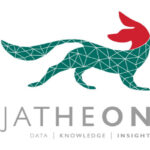Numbers, by themselves, are inert. They are mere digits, devoid of context or meaning. To truly understand the story they hold, we must go beyond the raw data and enter into the narrative it reveals. This requires a nuanced approach, one that goes beyond simply presenting the figures and instead seeks to illuminate the insights they offer.
The first step in interpreting data is to identify the surprises it presents. What findings defy expectations? What appears counter-intuitive? These unexpected insights often hold the key to understanding the deeper implications of the data. For instance, if a study reveals a surprising correlation between two seemingly unrelated factors, it prompts us to question our assumptions and explore the underlying mechanisms at play.
When comparing multiple datasets, it is crucial to highlight both similarities and disparities. By drawing attention to the points of convergence and divergence, we gain a richer understanding of the overall picture. For example, we might observe a significant difference in the prevalence of a certain phenomenon between two distinct populations, prompting us to investigate the potential contributing factors.
Data frequently reflects the human experience, and it is essential to acknowledge the emotional impact of the findings. Who benefits from these trends? Who suffers? By connecting the data to real-life consequences, we humanize the information and make it more relatable. For instance, a study on income inequality might reveal the disproportionate impact on marginalized communities, highlighting the need for policy interventions.
It is important to be aware of the potential for misinterpretation in data. What are the limitations of the study? What factors might have been overlooked? By acknowledging the potential biases and limitations, we ensure a more comprehensive and nuanced understanding of the data.
Just as a good story requires a compelling narrative arc, so too does data analysis. By weaving a narrative around the findings, we can engage the reader and make the information more memorable. This involves identifying the upshot of the data, the key takeaways, and the implications for future action.
Ultimately, the goal of data analysis is to go beyond the numbers and reveal the stories they hold. By embracing a thoughtful and nuanced approach, we can unlock the insights hidden within the data and use them to inform our understanding of the world around us.
A graduate of the University of Waterloo, I have been a member of the Professional Engineers of Ontario since 1982 (Now designated Retired). A member of The Association of Ontario Locksmiths, I have been active in the Locksmith trade since 1985





